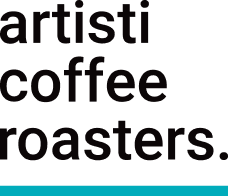In the ever-evolving world of coffee, even the smallest details can have a significant impact on the quality of your espresso. One such detail is puck preparation—the process of readying the coffee grounds in your portafilter before brewing. Over the years, methods have shifted from old school to new school, each with its own approach to achieving that perfect shot. Let’s dive into the differences between these methods and explore why modern techniques can make all the difference in your coffee game.
Old School Puck Preparation: Quick and Simple, but Inconsistent
Old school puck preparation, which many baristas practiced a decade or more ago, was all about speed and simplicity. You’d start by filling the portafilter basket with coffee grounds, then give it a quick tamp, maybe a little knock on the side to tidy things up, and that was it. This method, while efficient, often led to inconsistencies. Without precise measurement or attention to distribution, the coffee bed could easily become uneven, leading to unpredictable extraction times and flavors.
For instance, in one example using the old school method, the yield varied from 46 grams in 26 seconds to 44 grams in 23 seconds. These fluctuations in extraction time highlight the lack of control inherent in the old approach. The resulting espresso might be drinkable, but achieving consistent quality shot after shot was a challenge.
New School Puck Preparation: Precision and Consistency
Modern puck preparation techniques have introduced a level of precision that old school methods simply can’t match. The key to this approach is in the details: weighing your dose, breaking up clumps, distributing the grounds evenly, and using tools like the NCD (Neutral Coffee Distribution) to ensure a uniform coffee bed.
By incorporating these extra steps, new school methods offer greater control over the entire brewing process. For example, when using a dosing pot and scales, you can measure out exactly 22.5 grams of coffee, ensuring consistency in every shot. This precision extends to the tamping process as well, with a consistent tamp pressure helping to eliminate another variable that could affect extraction.
The result? In a comparison of new school extractions, the yield remained within a tighter range—44 to 45 grams—with a much more consistent extraction time of around 34 to 36 seconds. This increased extraction time allows for better flavor development, giving you the opportunity to fine-tune your grind size and extract the full potential of your coffee.
The Benefits of Modern Techniques
So, why should you consider adopting these new school methods in your coffee routine or cafe? The answer lies in consistency and control. With old school methods, the variability in dosing, tamping, and distribution can lead to uneven extraction and unpredictable flavors. In contrast, modern techniques allow you to manage these variables more effectively, resulting in a more consistent and flavorful espresso.
For cafe owners, this consistency is crucial. With multiple baristas on staff, each with their own habits and techniques, it’s easy for quality to vary throughout the day. By standardizing puck preparation processes, you can ensure that every barista produces the same high-quality espresso, reducing variability and improving overall customer satisfaction.
Conclusion
In the world of coffee, precision and consistency are key to unlocking the full potential of your beans. While old school puck preparation methods may have been the norm in the past, modern techniques offer a more reliable and effective way to achieve great results. By embracing these new methods, you can take your coffee brewing to the next level, whether you’re an at-home enthusiast or a professional barista.
Have you tried incorporating these modern techniques into your routine? Share your experiences in the comments below! And if you’re looking for more personalized guidance or want to take your coffee skills further, feel free to reach out—we’re always excited to work with fellow coffee lovers who are passionate about making great coffee.
Don’t forget to subscribe to our YouTube channel for more tips and tutorials, and hit the bell icon to stay updated on our latest videos. Happy brewing!










